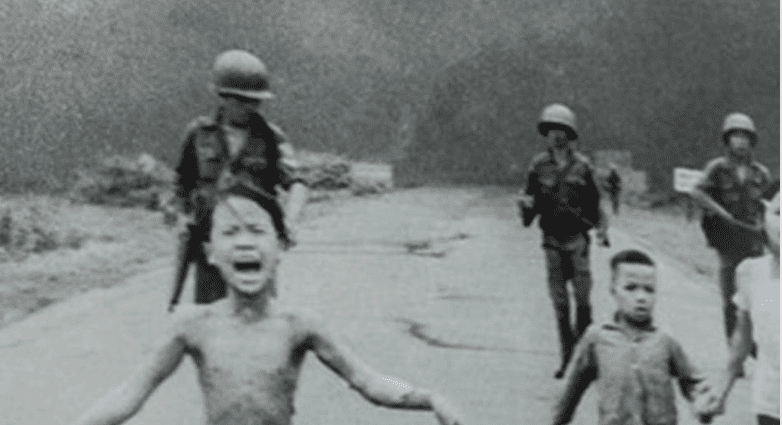The chilling genesis of one of the most haunting images of the Vietnam War unfolded in a single moment of unimaginable horror. The iconic “Napalm Girl” photograph, etched into the collective memory of the American public in 1972, continues to serve as a visceral testament to the harrowing realities of conflict.
The photograph, captured exactly 52 years ago in June, portrays the heart-wrenching plight of a nine-year-old girl amidst the aftermath of a US military bombing raid on the tranquil village of Trang Bang in Tay Ninh Province, Vietnam. Stripped of her innocence and dignity, the girl—later identified as Kim Fook—embodies the raw anguish and desperation of war as she flees, her agonized cries reverberating through the lens of international journalists.

Trang Bang, once a sanctuary, became a crucible of carnage on June 7, 1972, as the North Vietnamese Army seized control of the city. Amidst the chaos, Kim Fook sought refuge in a Buddhist temple along with other villagers, only to find themselves ensnared in the crosshairs of napalm—an incendiary agent that clings to flesh, inflicting excruciating burns and unimaginable suffering.
As flames engulfed the temple, Kim’s frantic escape was fraught with tragedy as her cousin perished and her own body bore the searing scars of napalm’s wrath. Miraculously, her life was spared by the intervention of Vietnamese photographer Nick Ut, who rushed her to safety at a hospital in Saigon.
Half a century on, the bond between photographer and survivor endures, a testament to the enduring legacy of that fateful encounter. Recounting the harrowing ordeal from her home in Toronto, Kim Phuc reflects on the indelible mark etched upon her soul by that pivotal moment. Meanwhile, Nick Ut vividly recalls the gut-wrenching sight of Kim’s charred figure, his instinctive response driven by a desire to alleviate her agony.
Nick Ut’s Pulitzer Prize-winning photograph, immortalized in history, stands as a searing indictment of the atrocities of war. Its profound impact has reverberated across the decades, earning it the distinction of being hailed as the most potent image of the past half-century. From poll-topping accolades to inclusion in TIME’s prestigious roster of influential photographs, the “Napalm Girl” remains an enduring symbol of resilience amidst unfathomable.
Check out what Kim looks like today:

